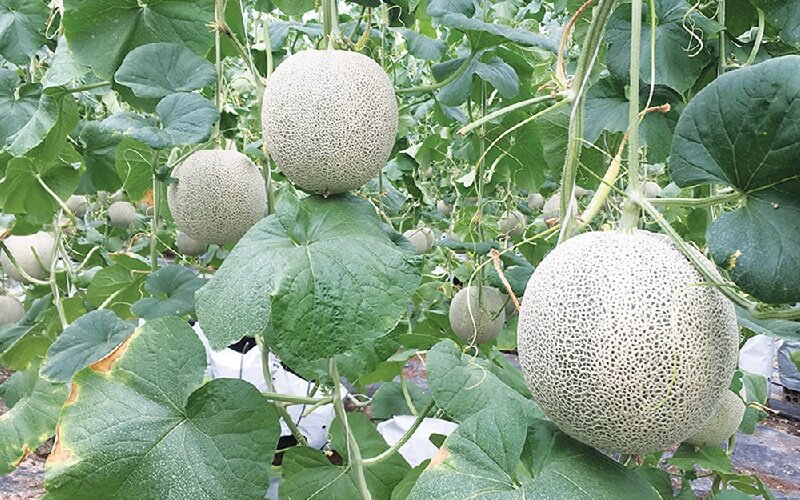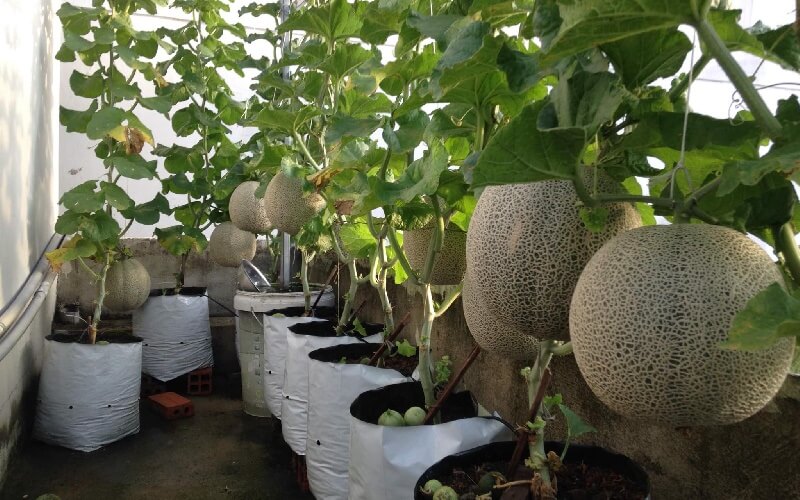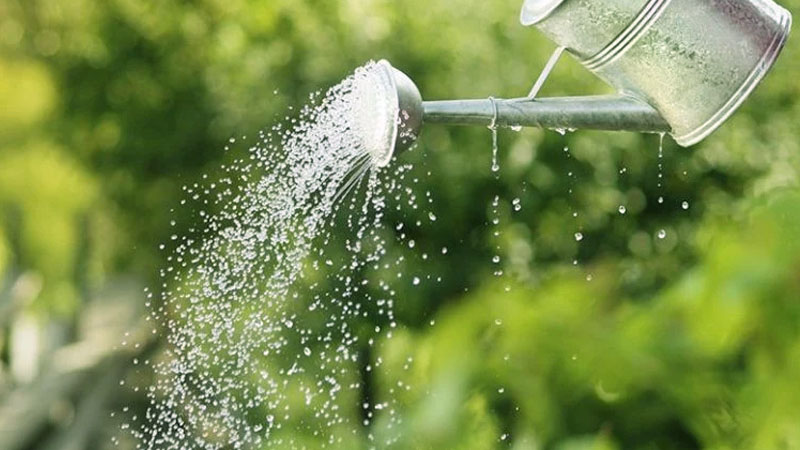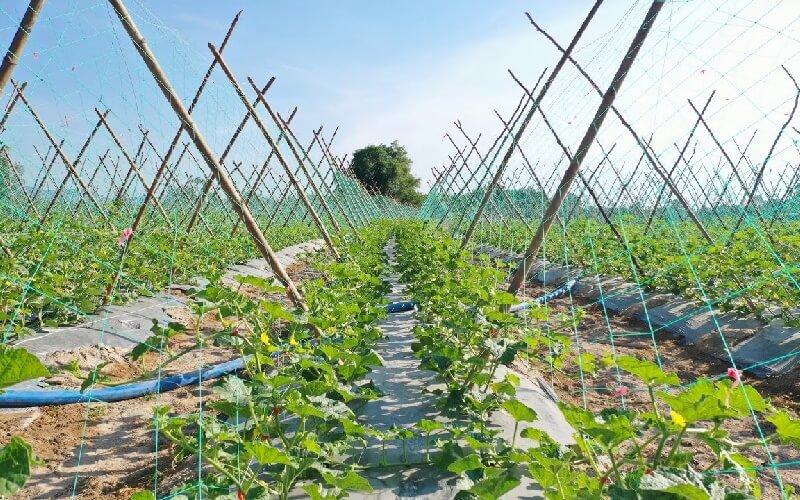Muskmelon is a high-value crop that requires specific knowledge to cultivate successfully. Learn how to grow muskmelon with these informative tips for a bountiful harvest.
1 Pre-planting Considerations for Muskmelon
 Plant muskmelon during the right season for higher yields.
Plant muskmelon during the right season for higher yields.
Here are some essential considerations to make before planting muskmelon at home:
Choose the Right Month to Plant Muskmelon
The ideal months for planting muskmelon are from February to September. However, the best times are either February-March, with a harvest in late April or May, or August-September, with a harvest in November-December.
Avoid planting during cold weather as the plants are more susceptible to pests and diseases, and the survival rate is lower.
Select Muskmelon Seeds
Choose F1 purebred seeds for higher germination rates and larger, sweeter fruits. Avoid hybrid seeds without a clear brand as they tend to have lower germination rates and produce fewer fruits.
Choose a Suitable Location
Muskmelon thrives in sunny and spacious areas. Utilize your front yard, rooftop, or balcony for planting. Avoid planting in shaded and cramped spaces as it hinders the plant’s growth and fruit production.
 Muskmelon thrives in sunny and spacious areas.
Muskmelon thrives in sunny and spacious areas.
Prepare the Soil
For optimal growth, muskmelon requires nutrient-rich, loose, and well-drained soil. Use a mixture of clean soil, worm castings, worm extract, and coconut coir. You can purchase muskmelon-specific soil from gardening stores.
Alternatively, create your own mix by soaking honeycomb charcoal in water for a day, changing the water periodically to remove impurities. Then, mix 40% soil, 40% charcoal, and 20% husk together.
Prepare the Planting Container
Use plastic or foam boxes with holes punched in the bottom for better drainage and oxygen circulation. This prevents waterlogging and promotes healthy plant growth.
2 How to Grow Muskmelon on a Rooftop
 Properly cared-for muskmelon plants grown on rooftops can produce large, sweet fruits.
Properly cared-for muskmelon plants grown on rooftops can produce large, sweet fruits.
Planting Techniques for Rooftop Muskmelon
Seed Germination
Once you have your seeds, container, and soil ready, the first step is seed germination. Soak the seeds in warm water (ratio: 2 hot + 3 cold) for 4-5 hours, then wrap them in a damp cloth until you see signs of cracking.
Note: If you’re using F1 seeds, you can skip this step and proceed to germination.
Place the seeds in prepared seedling trays, cover with a thin layer of soil, and water regularly to maintain moisture. Keep the trays in a cool, shaded area, avoiding direct sunlight. Within 2-3 days, the seeds will germinate, and within 7-10 days, the seedlings will develop two true leaves.
Transplanting Seedlings
After about 10-12 days, when the seedlings have two true leaves, it’s time to transplant them into larger containers. Dig a small hole, carefully remove the seedling from its tray, place it in the hole, and fill the hole with soil, tamping it down gently around the seedling. Water the plant thoroughly and place it in a shaded area, watering twice a day to maintain moisture.
Caring for Your Muskmelon Plants
 Healthy muskmelon plants produce large and abundant fruits.
Healthy muskmelon plants produce large and abundant fruits.
Watering
During the seedling stage, avoid overwatering. Once the plant has 3-4 leaves, water each plant with 0.5-0.7 liters of water per day, adjusting the amount based on weather conditions. On hot days, you may need to water more, while on rainy days, you can reduce the amount. Consider using a spray nozzle to avoid damaging the plants.
Fertilizing
To promote fruit production, fertilize your muskmelon plants regularly. The amount and type of fertilizer depend on the plant’s growth stage:
When the plant has 3-4 leaves, provide nitrogen fertilizer to encourage faster growth and longer vines. Mix ½ cup of nitrogen fertilizer (using a tea cup as a measure) with 7-8 liters of water and apply to the plants.
As the plant develops more leaves and flower buds appear, mix 3 parts nitrogen, 1 part phosphorus, and 2 parts potassium with 7-8 liters of water and apply this solution every other day to provide sufficient nutrients for the plant’s development.
 Fertilize your muskmelon plants regularly for optimal growth.
Fertilize your muskmelon plants regularly for optimal growth.
When the fruits start to form, increase the amount of phosphorus to ⅔ of a cup to promote larger and faster-growing fruits.
Building a Trellis
When your muskmelon plant has 5-6 leaves, it’s time to build a trellis for it to climb. If you’re planting near a balcony railing, you can use that as a trellis. Otherwise, you can use bamboo stakes or wooden poles to create a trellis.
If you plan to grow muskmelon long-term, consider investing in a sturdier iron trellis that can support multiple seasons of growth.
Pollination
If your planting area has limited bee activity, you can assist with artificial pollination during the flowering stage to increase the fruit-setting rate.
Harvesting and Storage
Your muskmelon will be ready for harvest approximately three months after planting. Before harvesting, stop watering for 5-7 days to allow the fruits to ripen and sweeten. After harvesting, let the melons sit for 2-3 days before cutting them open to enjoy their sweetness and aroma.
3 How to Grow Muskmelon Outdoors
 Muskmelon growing outdoors.
Muskmelon growing outdoors.
Planting Techniques for Outdoor Muskmelon
Soaking and Sowing Muskmelon Seeds
Choose high-quality seeds and soak them in warm water for 4-5 hours, then wrap them in a cloth and let them sit for a day to encourage the seed coat to crack.
Germinating Muskmelon Seeds
Prepare seedling trays with soil mixed with compost or worm castings to provide sufficient nutrients for the seeds’ development. Once the seed coats have cracked, place the seeds in the trays, cover them with a thin layer of soil, and water regularly to maintain moisture for germination.
Within 2 days, the seeds will germinate, and within 8-10 days, the seedlings will develop two true leaves.
When the seedlings have true leaves, transfer them to larger containers with holes in the bottom for better drainage.
Transplanting Seedlings
When the seedlings have 2-3 true leaves, it’s time to transplant them into larger containers, such as plastic buckets or tubs. Remember to punch holes in the bottom of the containers to improve drainage and prevent waterlogging. Use loose, nutrient-rich soil for planting muskmelon.
Create a deep hole, place the seedling bag in it, and fill the hole with soil, covering the seedling’s roots. Cover the surrounding area with straw, wood chips, or dry grass to retain moisture.
After transplanting, water the plants twice a day and provide shade to protect them from intense sunlight.
Caring for Outdoor Muskmelon Plants
Watering
Water your muskmelon plants daily to maintain moisture levels, with the best times being early morning and late afternoon.
 Water your muskmelon plants daily for optimal growth.
Water your muskmelon plants daily for optimal growth.
Fertilizing
In addition to nutrient-rich soil, apply NPK fertilizer to promote flowering and increase the fruit-setting rate. When the plant has 4-5 leaves, add potassium and nitrogen fertilizer, and during the leaf development stage, apply diluted nitrogen fertilizer.
From the time the fruits start to swell until they ripen, about a month, apply NPK, potassium, and nitrogen fertilizer weekly, stopping 15 days before harvest.
Pruning
When the plant has 2-3 true leaves, start pruning the leaves and pinching the tips, continuing until the plant has 8-10 leaves. Then, let that branch grow. When the plant reaches 22-25 leaves, snip off the tip to encourage the plant to focus its energy on fruit production.
Note: If the plant produces too many fruits, remove some, leaving only 2-3 fruits per plant, as muskmelons are large and heavy.
 Build a trellis for your muskmelon plants to climb.
Build a trellis for your muskmelon plants to climb.
Building a Trellis
When the plant has 4-5 true leaves, it’s time to build a trellis for it to climb. You can use a net trellis and gently tie the plant to it with nylon string, or you can use stakes to support the vines.
4 Frequently Asked Questions about Growing Muskmelon
How to Distinguish Male and Female Flowers
-
Female flowers: These flowers grow from the leaf axils and have a single flower per axil. They have a small ovary below the petals, which develops into a fruit after successful pollination.
-
Male flowers: These flowers grow in clusters from the branch axils. They lack an ovary below the petals and are usually shorter than female flowers.
 The best time for pollination is between 6 am and 8 am.
The best time for pollination is between 6 am and 8 am.
Best Time for Pollination
The ideal time for pollination is between 6 am and 8 am, when the female flowers turn yellow and are about to bloom.
How to Pollinate Muskmelon Flowers
-
Pluck a male flower, remove its petals, and leave the yellow anthers intact.
-
Rotate the male flower’s anthers around the female flower to transfer the pollen.

































